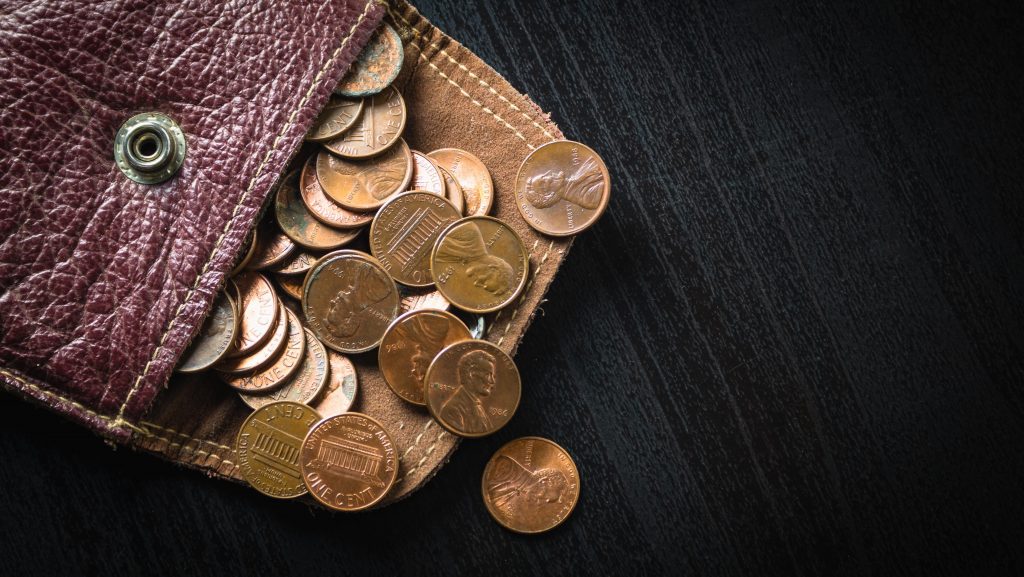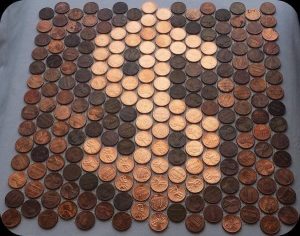
“Find a penny, pick it up. All day long, you’ll have good luck.”
Based on how often I spot abandoned pennies on city sidewalks and store counters, it seems this is no longer a popular idiom. In fact, Philip Diehl, who is the current president of coin distributor U.S. Money Reserve and former U.S. mint director, calculated the amount of work it takes to physically retrieve a dropped penny and concluded that the effort is not even worth the monetary value of the coin. Much like Australia and Canada, which have abolished the penny in 1992 and 2013, the U.S. has been contemplating for some time the idea of abolishing this form of currency.
Penny for your thoughts?
A Bit of Background
This is not the first time there has been debate on abolishing a form of U.S. currency; the half-cent was eliminated back in 1857. But did you know that we have been referring to the penny incorrectly in our mainstream vernacular? Technically, the U.S. does not make ‘pennies;’ the official designation is ‘cent.’ The term ‘pennies’ dates back to colonial times when English pennies were in circulation, according to Barry Stuppler, president of the Professional Numismatists Guild. The penny became legal tender in 1856. Since then, more than 300 billion one-cent coins with 11 different designs have been minted. Today, there is nothing that can be purchased with one cent, but back in 1909, you could mail a postcard or even buy a few eggs for a penny. In the 1940’s, vendors sold individual apples on the street for a penny, and you could even see a Charlie Chaplin film on a viewing machine at a carnival for a penny. The penny was also the first to include the inscription, “In G-d We Trust.” You may be surprised to learn that Abraham Lincoln has not always adorned the U.S. penny. In fact, Lincoln’s profile didn’t grace the copper coin until 1909, on the 100th anniversary of his birth.
A Question of Common “Cents”
Old-timers will never tire of reminding us that in their day, one could purchase sweets or a small treat at their corner candy store for a mere shiny penny. Some of us may have fond memories of throwing a penny into a wishing fountain, carrying our penny-filled jars to the bank, or placing them into leather penny loafers. But today, for the most part, they are used for pushke deposits when we have spare change or for some other petty sales transaction. Penny usage is being slowly phased out of many daily interactions: toll booths, MTA buses busses and trains, vending machines, laundromats, gumball machines all do not accept them as valid currency. They have become such castaways that is not uncommon to hear people say, “keep the change,” when being handed a lonely penny.
The main objection to the penny is that its production is not cost-effective, since it costs more to produce than it’s worth. The U.S. Mint reported that it costs 1.5 cents to produce a penny, translating to a loss of almost $46 million in the production of more than nine billion pennies a year. Philip Diehl wishes to abolish the penny. In fact, he tried to do just that during his time as the 35th director of the U.S. Mint. Arizona Senator John McCain and Wyoming Senator Mike Enzi have also introduced legislation to halt penny production, promising $16 billion in savings.
Harvard University Economist Greg Mankiw argues that pennies are outdated means of exchange. “When people start leaving a monetary unit at the cash register for the next customer, the unit is too small to be useful,” he says. Economist and financial expert Chris Martinson, Ph.D., says that pennies serve no function other than “allowing merchants to advertise something for sale for $19.99.”
Ever stand behind a person at the grocery store grinding your teeth as they painstakingly scoop out individual pennies from their back pocket or cluttered purse? A study conducted by Walgreens and the National Association of Convenience Stores showed that handling pennies adds an average of two seconds to each cash transaction. That doesn’t sound like much, but a 2012 study by three Federal Reserve Banks shows that the average consumer makes 23 cash transactions in a single month – and according to the Bureau of Labor Statistics, there are over 316 million consumers in the country. Add it all up, and it comes to more than 48 million hours wasted each year.
Two Sides to Every Coin
There are many Americans who still use the penny daily and want to see it stick around. President Barack Obama, in a 2014 YouTube chat, referred to those Americans as “emotionally attached” to the penny because it conjures up happy childhood memories of saving pennies in piggy banks and seeing them converted into dollars. Obama asserted that pennies are a symbol of government waste. But Donn Pearlman, a spokesman for the Professional Numismatists Guild, claims that coins and currency are pieces of history that you can hold in your hands, and that their designs often involve social and cultural issues as well as economics. “Whose portrait do you want on your Visa® card?” he asks.
Will all forms of money eventually become obsolete as electronic forms of payment rise in popularity? Martenson says this fear is unfounded, as there will always have to be “legal tender” for tax purposes. The government has to sanction the form of money it is willing to accept, in whatever form that might be.

Penny proponents fear that eliminating the coin will distort prices and may even trigger a mild inflation. Americans for Common Cents has a subdivision which manufactures zinc and copper blanks for the Mint. They advocate keeping the penny to avoid ‘rounding off’ consumer prices. They point to a study by Penn State economics professor Raymond Lombra that estimates that consumers would end up paying a tax of $2 billion to $4 billion over the course of two years if the penny is eliminated. Former mint director Diehl, however, maintains that only 25 percent of all transactions are cash; the other 75 percent are made via electronic payment. He told CNBC that companies would round prices down, not up, to avoid “upsetting customers over a cent.”
If the recent hurricanes, tornadoes, and earthquakes showed us anything, it is that consumers living in communities decimated by natural disasters cannot rely on digital forms of payment. During power outages, ATMs, credit cards and cell phone service are all knocked out of service, stranding those in need of quick access to cash. This is why traditional coins are much more reliable, says Donn Pearlman, spokesperson for the Professional Numismatists Guild.
Charities also rely on penny donations, which may seem minuscule at first but can add up to large amounts when collected. Take for example the case of Coinstar, which owns and operates the largest fully- automated, multinational network of self-service coin counting kiosks with more than 20,000 locations. They hit a milestone this year with an astonishing 1 million dollar donation to Feed America, an amount collected from users of their machines given the option to donate some of their coins to the charity.
Adding it all Up
The government has researched the possibility of making the penny from cheaper material but found no way to produce the coin for less than it’s worth. It is simply too expensive to play around with the penny.
Before you are quick to toss the coin, consider how much cash has been generated for charity through humble penny deposits. Despite Bloomberg News’ findings that $61.8 million in loose change gets thrown away every year in the U.S, it appears that many still adore the penny (see sidebar). 56% of numismatic experts predict that the penny will be extinct by 2026, but I am unconvinced. Ever since credit cards and digital payments have entered the picture, we have heard the claim that soon we will be a cashless society, but decades later coins are still going strong as they have been for over 2700.
Your Two Cents
Would you favor or oppose eliminating the penny coin?
Favor strongly . . . . . . . . . . . . . . . . . . . . . . . . . . . . . . . . . . . . . . . . . . . . . . . . . . . . . . . . .16%
Favor somewhat . . . . . . . . . . . . . . . . . . . . . . . . . . . . . . . . . . . . . . . . . . . . . . . . . . . . . . . 18%
Oppose somewhat . . . . . . . . . . . . . . . . . . . . . . . . . . . . . . . . . . . . . . . . . . . . . . . . . . . . . .20%
Oppose strongly . . . . . . . . . . . . . . . . . . . . . . . . . . . . . . . . . . . . . . . . . . . . . . . . . . . . . . . 31%
Not sure . . . . . . . . . . . . . . . . . . . . . . . . . . . . . . . . . . . . . . . . . . . . . . . . . . . . . . . . . . . . . 14%
When getting change back, do you usually take the pennies, or leave them with cashier?
I take my pennies with me . . . . . . . . . . . . . . . . ……. . . . . . . . . . . . . . . . . . . . . .53%
I usually leave my pennies at the counter . . . . . . . . . . . . . . . . . . . . . . . . . . . . . . 39%
Not sure . . . . . . . . . . . . . . . . . . . . . . . . . . . . . . . . . . . . . . . . . . . . . . . . . . . . . . . . 8%
Data obtained from a 2014 YouGov/Huffington Post survey
You must be logged in to post a comment.